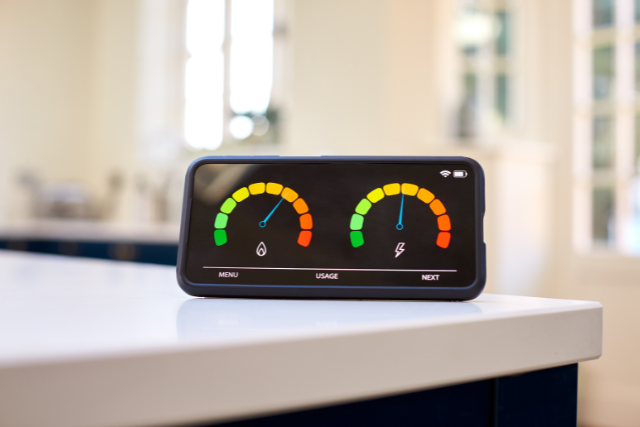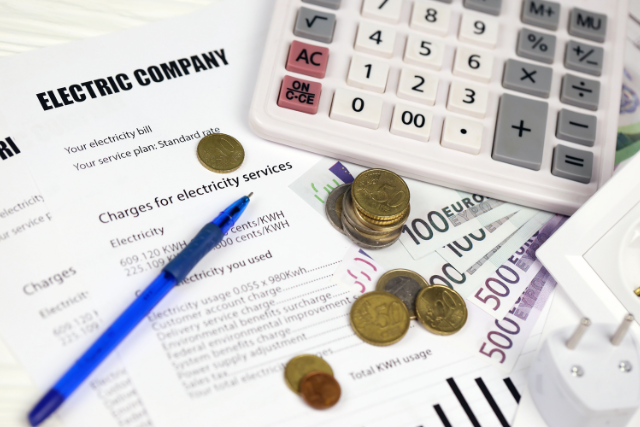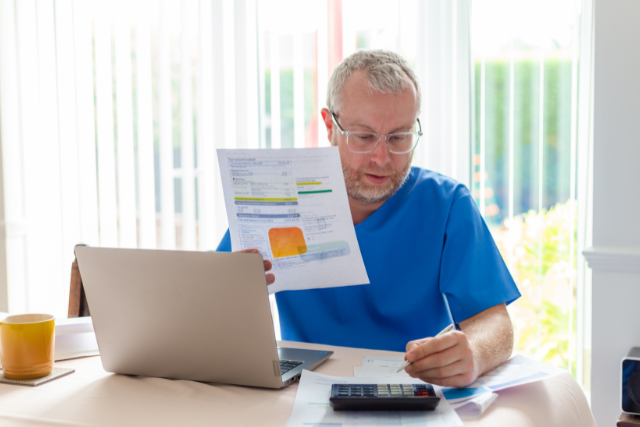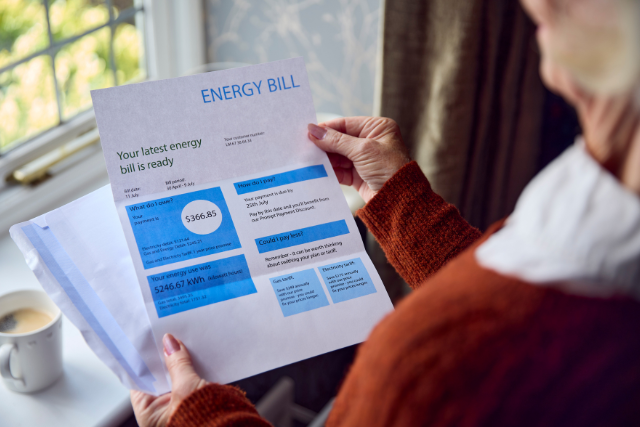Can I Switch My
Energy Supplier?
Written by: Energy Efficient You
Published: 8th March 2024
Switching Energy Suppliers
For many of us, cost and energy efficiency are at the forefront of our minds with the current cost of living crisis and rising bills. This has led many to explore new ways to make responsible choices regarding their energy consumption. With the fluctuation of energy prices, one avenue worth considering is switching your energy supplier; but, is it possible, and how can you go about it? In this article, we will delve into the ins and outs of switching energy suppliers, exploring the benefits, the process, and the factors you should consider before making the switch.

Can I Switch My Energy Supplier?
The simple answer is yes, you can switch your energy supplier at any time. This can often be done online or over the phone, and is a lot easier than you may think!
Despite the simplicity of the process, many households stay with their current energy supplier for years. This often stems from the misconception that they are bound to their current supplier or that their loyalty ensures that they are getting the best deals available. However the reality is that energy prices are ever-chaging, and a lot of the best deals out there are reserved for new customers, leaving long-term patrons potentially missing out on substantial savings.
To ensure you are not inadvertently overpaying for your energy, you should be comparing different energy suppliers. This process allows you to explore the offerings of different brands and find the one that aligns most seamlessly with your household’s needs and preferences.
Should I Switch My Energy Supplier?
Perhaps then, the question is ‘should’ you change energy suppliers, rather than ‘can you’. How do you know when the right time is to Switch energy suppliers? There are many things to consider before making the switch, and it is important you weigh up the pros and cons.

The Benefits:
Cost Savings: One of the primary benefits of switching energy suppliers is the potential for cost savings. Different providers offer varied rates, and by comparing options, you may find a more economical plan that reduces your overall energy expenses.
Access to Better Deals: Many energy suppliers reserve their most attractive deals for new customers. By switching, you may gain access to promotions, discounts, or special offers that can lead to significant savings on your energy bills.
More Options: Switching allows you to explore and choose energy plans that better align with your specific needs. Some suppliers specialise in providing energy from renewable sources, allowing you to support a more sustainable future, or others offer fixed-rate plans that suits your household income better. Whatever yours needs, switching means you have the flexibility to tailor your new energy contract to suit your preferences.
The Cons:
Early Termination Fees: Although you are free to switch your energy suppliers at any time, some energy contracts have early termination fees or exit charges. Switching before your contract ends may result in additional costs that offset potential savings, so this is definitely something to consider before making the switch.
Potential Disruptions: While the switching process is generally seamless, there is a slight risk of temporary disruptions in service during the transition. This could be inconvenient, especially if not well-timed.
Adjustment Period for Savings: The benefits of switching may not be immediately apparent. It might take some time before you see substantial savings, and during this adjustment period, the perceived advantages might not be as significant – it’s all about if you are willing to wait to reap the benefits.

How Do I Switch My Energy Supplier?
Step 1 – Understand Your Current Contract
Check your current energy contract for any termination fees or specific terms. Understanding your obligations can help you make a smooth transition and avoids any unexpected leaving fees or contract obligations.
Step 2 – Research Your Options
Start by looking into different energy suppliers in your area. Check their prices, contract details, and whether they use renewable or non-renewable energy. This makes sure you will be making informed choices for what your household prioritises, whether that be eco-friendly and budget-friendly energy.
Step 3 – Compare Energy Suppliers Rates and Plans
The next step is to compare energy suppliers, the going rates and plans offered from these different companies. Pay attention to any introductory offers (and their duration) as well as long-term pricing structures the brand has in place. See whether the most attractive deal initially is worth the investment in the long run.
Step 4 – Initiate the Switch
Once you’ve chosen a new supplier, use our form or contact them directly to initiate the switching process. They will guide you through the necessary steps, which may involve providing your current energy details and agreeing to new contract terms.

Energy Price Comparison Tool
We understand that this step can be complicated and it can be difficult to know you’re making the right choice. To help you get started, we’ve made it easy to compare energy suppliers and their costs in just a few simple steps with our energy suppliers comparison tool:
Enter Your Details: Provide some basic information about your current energy usage and preferences.
Compare Offers: Receive personalised quotes from multiple energy suppliers tailored to your needs.
Choose Your Plan: Select the offer that best suits your budget and preferences.
Switch and Save: Complete the switch online hassle-free, and start enjoying lower energy bills right away!
Things to Consider Before Switching Energy Suppliers
Before making the leap, there are a few things you should always consider before deciding to switch energy suppliers. To guide you through this decision and to help you get started, we’ve listed a few for you:
Contract Terms: Be mindful of the contract terms offered by potential new suppliers. Are they fixed or variable? What are the cancellation policies?
Hidden Fees: Scrutinise the terms and conditions for any hidden fees or charges that may apply during or after the switching process.
Customer Reviews: Explore customer reviews and testimonials to gauge the satisfaction levels of current customers with the prospective energy supplier.
Green Energy Options: If supporting renewable energy is important to you, inquire about the supplier’s commitment to sustainability and their offerings in green energy.
How Long Does it Take to Switch Energy Suppliers?
The duration of time it takes to switch energy suppliers can vary, but the process is typically completed within three to four weeks.
This timeframe includes the necessary administrative steps such as confirming your new contract, notifying your current supplier, and finalising the switch.
However, it’s important to note that external factors, like the specific procedures of your region or any unique circumstances could influence the overall timeline. Always check with your chosen energy supplier before signing with them for a more precise estimate tailored to your situation.

Conclusion
Switching your energy supplier is a feasible and potentially beneficial step toward taking control of your energy choices and finances. By conducting thorough research, comparing options, and considering factors such as cost, contract terms, and sustainability, you can make an informed decision that aligns with your values and financial goals. Take control of your expenses and contribute to a more sustainable and cost-effective energy future by exploring the possibilities of switching to the best energy suppliers today.
See Our Other Blogs
How Much Does External Wall Insulation Cost?
External Wall Insulation has become a popular choice for homeowners to improve energy efficiency and reduce heating costs. Also referred to as solid wall insulation, it involves adding a layer of insulation material to the exterior walls of the building. This then acts like a thermal barrier, reducing heat loss through the walls. External wall insulation is key to lowering your energy bills.
How To Calculate Energy Efficiency
Energy efficiency is a measure of how effectively energy is utilised in a system or process to accomplish a specific task. It’s about getting the most out of the energy we use and optimising performance. Whether it’s in homes or businesses, understanding and improving energy efficiency are steps toward sustainability and resource conservation.
Solar PV has gained immense popularity as a clean and reliable energy source that holds the promise of reducing greenhouse gas emissions and minimising our dependence on fossil fuels. Photovoltaics (PV) has transformed the way we produce and consume electricity. Learn more about how solar pv can help save you money on your electricty bills.




